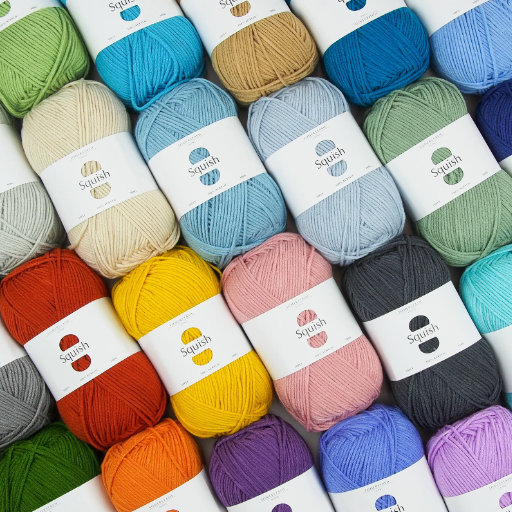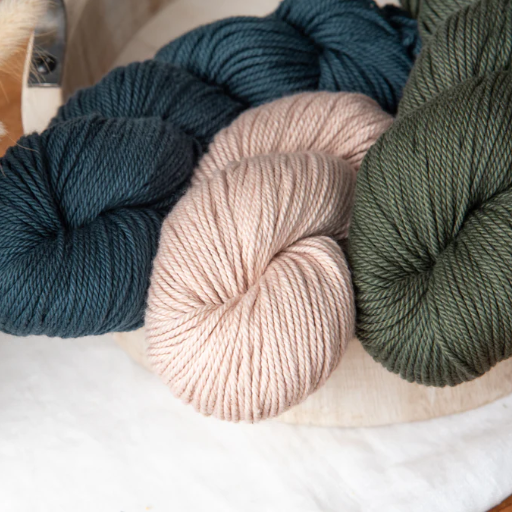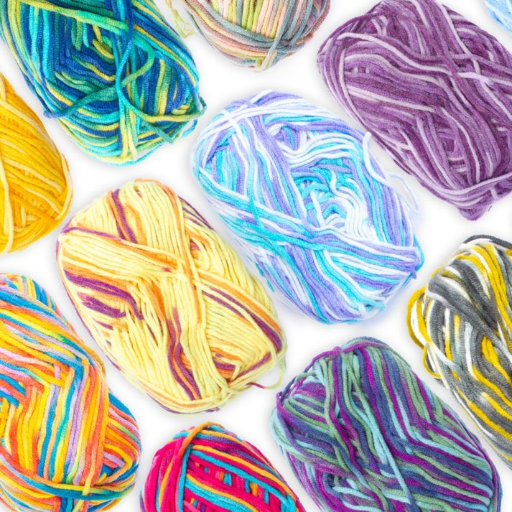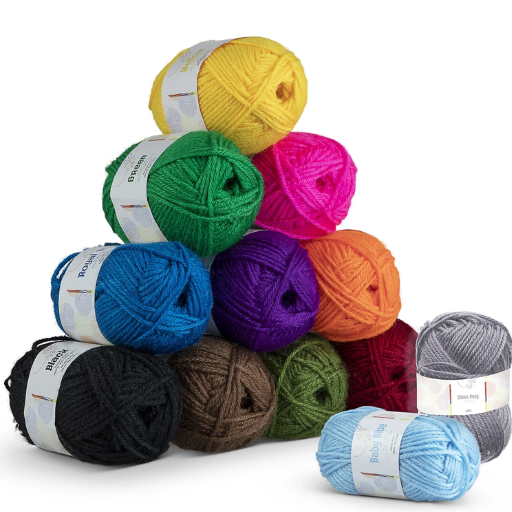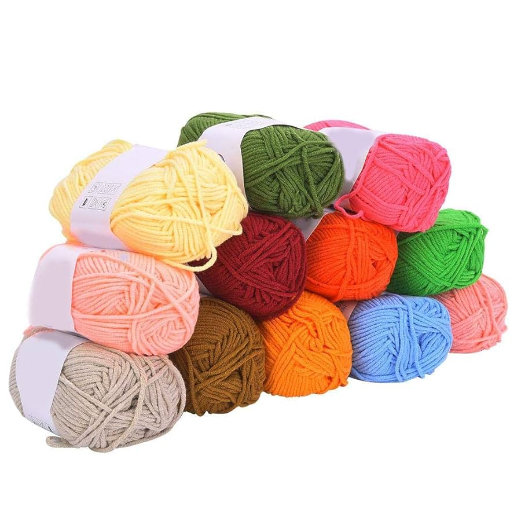Women across many cultures employ crochet as a means of artistic expression. Crochet is an artistic skill which requires creativity, technique, and lots of patience. Feeling accomplished after finishing the first row and foundation chain is justified, but mastering the second row is what allows one to create a consistent and even fabric for your project. In this guide, I will provide a complete solution for crocheting the second row while tackling common newbie hurdles in achieving flawless stitches.
Over the next two weeks, you will learn about the most important concepts on how to work into the stitches of the previous row, how to keep constant tension, and how to spot the turning chain. Also, we will go over stitch placement along with some skill refinement tips to flatten the learning curve. If you want to crochet a scarf, blanket, or any other kind of project, being able to crochet the second row will boost your confidence to undertake more challenging projects.
What Are the Basics of Crocheting the Second Row?

For the second row of your crochet, to begin, locate the turning chain in the prior row, which will inform your start point. Depending on the pattern you select, place the hook in the right space or stitch that you need to. It’s very important to keep a balanced tension; any slack or stitches too firm can ruin the project. Do one stitch at a time, making sure that you work with both loops of the stitch unless otherwise stated. The edge stitches will give you the neatness, so pay attention and count correctly. You will need repetition and attention to detail to master this essential skill, which is indeed a skill.
Understanding the Foundation Chain
The foundation chain is the most important step to any crochet project since it acts as the base to which all other project parts are connected. To generate a foundation chain, begin with a slip knot and draw the yarn through the loop with your hook to create a string of loops. Generally, the problem lies with the amount of tension applied. Too tight makes it impossible to work into the chain while too loose leaves the stitches in need of more structure. Each chain corresponds to a stitch unless the specific pattern says otherwise. You should keep your attention on each chain you count as proceeding, as taking the proper estimate will hurt the project in its development stages. A proficient crocheter’s skill showing through in the projects comes from their ability to handle the foundation chain.
How to Turn Your Work Correctly
Turning your work correctly in crochet is vital for maintaining consistency in your project and ensuring proper alignment of stitches. After completing a row, turning your work involves flipping the piece horizontally so the opposite side becomes accessible. This process typically follows the creation of turning chains, which serve to elevate your hook to the height required for the next row’s stitches. For example, a single crochet row usually requires one turning chain, while double crochet rows often need three.
To execute this, finish the last stitch of the row, chain the required amount for the next row as dictated by your pattern, then rotate your work 180 degrees to continue. It is important to maintain an even tension during this process as excessive tightness or looseness in the turning chains can distort the edges of your project. Additionally, always take note of whether patterns specify specific turning chain placement, such as counting it as the first stitch of the row or not, to avoid errors that can lead to uneven rows or gaps. Mastering the technique of turning your work correctly ensures a clean and professional finish to your crochet projects.
Common Beginner Mistakes to Avoid
- Incorrect Turning Chain Placement
A frequent issue for beginners is misunderstanding whether the turning chain counts as the first stitch of a new row. Failing to follow the pattern’s instructions on this can lead to uneven edges and gaps, significantly impacting the overall symmetry of the project.
- Uneven Tension
Maintaining consistent tension is crucial for a polished finish. Beginners often pull turning chains too tightly, causing the edges of the work to curl, or too loosely, resulting in floppy or uneven edges. Practice and attention to tension will help create balanced, professional-looking rows.
- Skipping or Adding Stitches
An overlooked or extra stitch can easily throw off an entire row, especially when miscounting stitches near the turning chain. Developing a habit of counting stitches at the end of each row ensures accuracy and prevents unnecessary unraveling.
- Improper Stitch Recognition
Identifying the correct loops or spaces to place your hook is a common challenge. Misplaced stitches can create irregularities and disrupt the pattern. Referring to diagrams or video tutorials can help solidify stitch placement knowledge.
- Failing to Use Stitch Markers
Beginners often underestimate the value of stitch markers to signify turning chains, the start of a round, or complex stitch patterns. Omitting their use can result in losing track of the work’s progression, leading to avoidable errors.
How Do You Make the Second Row in Crochet?

To make the second row in crochet, start by turning your work so the stitches from the first row face you. If your pattern uses a turning chain (e.g., one chain for single crochet or three chains for double crochet), create this chain to establish the row’s height. Insert your hook into the correct stitch—often the first or second depending on the pattern—and work the first stitch. Continue placing stitches into each subsequent stitch from the first row, ensuring accuracy to maintain tension and alignment. Always reference your pattern for specific instructions and repeat this method for uniform rows.
Initiating the First Stitch of the Row
To begin the first stitch of a new row, you must turn your work correctly to ensure the previous row is in the correct position. Depending on your current pattern, execute the needed turning chain to correspond with the row’s stitch type; for instance, a single crochet will require a chain one while a double crochet requires a chain three. You will then proceed to place your hook into the specified stitch required by your pattern; this is normally the first stitch of the row, although some patterns call for using the second stitch instead. To make a loop, yarn over and pull through, for completing the stitch, follow its type. Proper placement of the first stitch is crucial to maintaining correct edges and following the pattern accurately.
Utilizing the Turning Chain
In the context of a row construction, the turning chain is foundational in placing the string or intended row in the correct height and on the vertical edges of the project, turning chains have a minimal relationship with the project’s edges. The height of the turning chain depends upon the type of stitch being used, for example: a chain one usually represents a single crochet, whilst chain two would be a half double and chain three, a double crochet. Whether the turning chain serves as the initial stitch of the row is an issue completely dependent on the rules set by the patterns. In the absence of patterns, it is said that the chain post counts as the first stitch; when that occurs, other stitches would have to begin in the subsequent stitch so that no extraneous increases take place. If the chains do not hit as a stitch, then the first stitch is executed straight into the opening. If executed correctly, the turning chain will eliminate poor shaped edges or alignments along the edges, voiding any center irregularities. These guides should always and strictly be adhered to while making a pattern with the turning chain. This will ensure that the overall structure of the crochet work is supported.
Techniques for Consistent Row of Stitches
Achieving proper crochet tension relies on accuracy throughout technique, yarn control, and pattern adherence. The first step is ensuring the tension in yarn lies under proper control which can be achieved through uniform hand positioning and controlled pulling of the working yarn. Stitches as well as rows will be impacted by imprecise tension leading to waviness or misshaping.
The responsibility of understanding the flow of turning chains or switching stitches lies with the individual. Increasing predictability or accuracy can be done by determining the starting stitch of a row and making sure that turning chains are employed properly. An example would be always starting subsequent stitches in the proper loop after turning chains to avoid accidental increases or misalignments.
Accurate and meticulous row count alignment can be achieved through the use of stitch markers. Particularly intricate or repetitive patterns can lead to missed or extra stitches and marking the first and last stitches helps track this.
Mistakes from the total sum of cumulative errors can be avoided through frequent counting of stitches after completing rows. Using previously mentioned factors will ensure the exact measurement and professional finish of any crochet project.
What Are the Different Stitch Types for the Second Row?

The stitches used on row two are based on the foundational stitch pattern on row one. Some may be single crochet (sc), double crochet (dc), or half-double crochet (hdc). As per the instructions, the stitches for the second row are mostly worked into the top loops of the stitches of the first row or Tu for the turning chains based on the design. Design changes at this point may call for changes in stitch placement as accuracy ensures stitch alignment. Concerns around consistency always have to be in conversation with correct tension and placement to prevent gaps and misalignments as progress continues.
Executing a Single Crochet Stitch
To execute a single crochet (sc) stitch, begin by inserting your hook into the designated stitch from the previous row, ensuring it passes through both top loops unless otherwise specified in the pattern. Yarn over (yo) by wrapping the yarn around the hook from back to front, then pull the yarn through the stitch. This action will leave two loops on the hook. Yarn over again and draw through both loops on the hook to complete the stitch. Maintain consistent tension throughout the process to ensure uniformity. The single crochet is one of the simplest and most commonly used stitches, forming a tightly woven fabric ideal for structural elements in your design. For patterns requiring changes in stitch height or alignment, adjustments in the initial placement are crucial.
Steps for a Double Crochet Stitch
To perform a double crochet (dc) stitch, follow these steps meticulously for consistent results:
- Yarn Over
Start by wrapping the yarn over your hook from back to front, creating an additional loop on the hook before insertion.
- Insert Hook
Insert the hook into the designated stitch of the previous row, ensuring it passes through both top loops unless the pattern specifies otherwise.
- Pull Up a Loop
Yarn over again and pull the yarn through the stitch. At this stage, you should have three loops on the hook.
- Yarn Over and Pull Through Two Loops
Yarn over once more and pull the yarn through the first two loops on your hook. This step reduces the loops from three to two.
- Yarn Over and Pull Through Final Two Loops
Perform another yarn over and pull the yarn through the remaining two loops on the hook. This completes the double crochet stitch.
The double crochet stitch creates a fabric with more height and less density than a single crochet, making it ideal for lacy patterns or projects requiring flexible drape. Consistent tension and even spacing of stitches are essential for a polished outcome.
Exploring the Half Double Crochet Technique
The half double crochet (HDC) stitch offers a balance between height and density, making it versatile for various crochet projects. It is slightly shorter than the double crochet but taller than the single crochet, providing a soft and textured finish. Below is a detailed step-by-step guide to the half double crochet technique:
- Yarn Over
Begin by wrapping the yarn over your hook, just as you would for a double crochet stitch.
- Insert Hook
Insert the hook into the designated stitch, passing through both top loops unless specified otherwise by the pattern.
- Pull Up a Loop
Yarn over again and pull the yarn through the stitch. At this step, there should be three loops on your hook.
- Yarn Over and Pull Through All Loops
Yarn over one final time and pull the yarn through all three loops on the hook. This movement completes the half double crochet stitch.
The HDC stitch is ideal for items requiring moderate height and a slightly tighter weave, such as hats, scarves, or blankets. Achieving uniform tension and proper stitch counting is key to maintaining consistent results throughout your project.
How to Troubleshoot Problems When Crocheting the Second Row?

In resolving the problems concerning the second row of crochet, start with confirming your stitch count is equal to the expected one mentioned in the pattern. The expectation stitch counts are off, and one of the many reasons the edges look uneven or the shape is distorted. Moreover, confirm that you are placing your hook underneath both top loops of each stitch unless the pattern states otherwise, as this will render the piece with structure. If the second row is feeling too loose or tight, you may need to reconsider the tension and either loosen or tighten it by gripping the yarn more. Finally, double check the first row for any discrepancies concerning the turning chain if they are counted, or ignored as a stitch needing consideration towards the pattern instructions. A misunderstanding of the turning chain can lead you to incorrect row alignment or gaps, which are not favorable.
Identifying and Fixing Common Errors
When crocheting the second row, issues often arise due to uneven tension, incorrect stitch placement, or miscounting stitches. Here’s how to address these common problems:
- Uneven Tension
Ensure your yarn is feeding through your fingers in a consistent manner. Practice holding the yarn with light yet controlled pressure to avoid stitches that are too tight or too loose, which can distort the fabric.
- Incorrect Stitch Placement
Missing or adding stitches can alter the shape of your project. Verify that you’re always inserting the hook into the correct stitch, particularly when transitioning from the foundation chain. Remember to count the turning chain as a stitch only if the pattern specifies.
- Miscounting Stitches
Count your stitches regularly to prevent errors from compounding across rows. Use stitch markers at intervals, such as every ten stitches, to track your progress and ensure accuracy.
By addressing these issues proactively, you can maintain the structural integrity of your project and achieve professional-quality results.
What to Do When You Miss a Stitch?
Whether or not the stitch is missed affects how far back the fix-the-mistake-done-er begins. If it is a recent mistake, take X number of steps back to the error, fix it, and continue crocheting. If that does not work, perhaps far more advanced measures are needed like invisibly weaving the stitch into the fabric with the accompanying pieces. If the mistake does not impact the overall formation of the design to any negative extent, one can loosen or tighten the remaining stitches. The decision on how to properly resolve the error relies on the assessment of the consequence, and as always, reference the pattern to ensure it goes with the design.
How to Handle a Twisted Row?
A twisted row happens when the starting chain becomes rotated in such a way that, when closing it off, the work is turned into a loop, so the work often spirals incorrectly. To address this problem, first, ascertain how far into the project the twist took place. If it is noticed early, then pull your work back to the foundation chain or join point, and then it flat before it goes back. Use stitch markers to help hold sections in place and stop them from twisting, These may need to be adjusted many times during the operation. If it is discovered further along in the project and cannot be undone without too much trouble, then contemplate on where in the project it could be and possibly be put in some sort of design. To keep from getting in this situation again, every once in a while, lay the work on the table for a few minutes while crocheting in circles, and check the alignment of the work before it is finished.
What Are Essential Crochet Tips for the Second Row?

When working on the second row, it is critical to ensure that your stitches are aligned correctly with the foundation row to maintain the overall structure and uniformity of the project. Start by identifying the turning chain from the previous row, as this will guide where the first stitch should be placed to prevent misalignment. Use stitch markers if necessary to mark key points in your work, such as the first and last stitches of the row. Consistently check your tension to keep stitches even, and count your stitches periodically to confirm you haven’t unintentionally added or skipped any. These practices will establish a solid foundation for the continuation of your project and minimize potential errors.
Maintaining Consistent Tension Across Rows
Maintaining consistent tension across rows is vital for achieving a polished and uniform crochet project. Begin by holding your yarn in the same position and apply continuous, steady pressure as you work through each stitch. Practice different ways of holding the yarn and hook until you find a comfortable method that allows for even movement. If tension varies, consider adjusting your grip on the yarn or using a different-sized hook to better suit your natural crochet style. Ensure that your environment supports consistency by working in similar conditions, such as proper lighting and posture. Periodically pause to assess your rows, comparing stitch sizes and alignment to identify and correct any inconsistencies early in the process.
Selecting the Right Crochet Hook for Your Project
Selecting the right crochet hook is fundamental and will influence the quality of the project. The hook’s size affects how the fabric is stitched together, with larger hooks creating softer stitches and smaller hooks stitching in more elaborate manners. Begin by determining the hook size that goes with the label of the yarn you intend to use; it usually has a recommended hook size which corresponds to the weight of the yarn. Keep in mind these along with the amount of tension you apply and the texture you want to achieve. For novice crocheters, ergonomic and aluminum hooks are better as they are user friendly and reduce strain in the hands. Steel hooks allow for very delicate threads, making them great for advanced users, along with wooden hooks that have great balance and grip. If you want to achieve even texture in your stitches, it is best to try out your hook using a swatch beforehand to meet the requirement of the project effectively.
How to Measure and Adjust the Row Length
The measurement of row length is done by placing your crocheted material on a flat complementary surface, such as a table or the carpeted floor that feels comfortable to you, and then using a tape measure or ruler. You must stretch out the material softly to get an accurate measurement since stiffness can distend the fabric’s final dimensions. For specific types of crochet work, achieving the shortest demarcated length can be difficult; thus, portioning out your crocheted item over an expansive form, measuring with guide lines, and striving for parallel row stitch patterns is immensely beneficial.
If the row length does not align with the pattern specifications, adjustments may be necessary. This means increases are made to add length by adding more stitches at the beginning and ending of the row in the correct pattern. You can as well reduce the row length by decreasing the number of stitches made, but you must not change the type of stitch made to keep the piece consistent. In the first case, a gauge swatch is necessary; both to determine tension in stitches and to adjust the position of the hook. Constantly check measurement along the way with complete uniformity throughout the piece is the end goal.
References
Frequently Asked Questions (FAQ)
Q: What is the first step in beginning the second row of a crochet project?
A: To start the second row when working on a crochet project, you need to turn your work after completing the first row. Then, chain the appropriate number of stitches as instructed in your crochet pattern. This is often referred to as the “turning chain.”
Q: How do I insert the hook when starting the second row?
A: To insert your hook for the second row, locate the first stitch of the previous row. Insert your hook into the second chain from the hook or as specified in your crochet pattern, and then proceed with the stitch you are using, such as a single crochet or half-double crochet.
Q: Can you explain how to do a half-double crochet in the second row?
A: To perform a half-double crochet, wrap the yarn around the hook once, insert the hook into the specified stitch of the previous row, yarn around the hook again and pull through so you have three loops on your hook. Then, yarn over and pull through all three loops on your hook.
Q: What should I do if I make a mistake while working on the second row?
A: If you make a mistake in the second row, carefully unravel the stitches back to the point of error. Re-insert your hook into the last correctly worked stitch, and resume crocheting according to your tutorial or crochet pattern.
Q: Why is it important to count stitches when crocheting the second row?
A: Counting stitches ensures that your project maintains the correct shape and size. Consistent stitch count across the row prevents your project from accidentally increasing or decreasing in width, which is crucial for a beginner crochet blanket or other projects.
Q: What is the purpose of the chain stitch at the beginning of the second row?
A: The chain stitch at the beginning of the second row acts as a turning chain, which lifts the row to the correct height for the stitch you are using, such as single crochet or half-double crochet. This helps maintain the project’s even edges.
Q: How do I finish the second row when working in rows?
A: To finish the second row, complete the last stitch, ensuring it aligns with the final stitch of the previous row. Double-check that your stitch count matches the first row. Then, turn your work to begin the next row.
Q: What tips can help beginners successfully learn how to crochet the second row?
A: Beginners should follow a structured crochet lesson or tutorial, practice basic crochet stitches regularly, and be patient with themselves. Using stitch markers and counting stitches can help maintain consistency across the row.
Q: How can I improve my technique for inserting the hook in the second row?
A: Practice is key to improving your technique. Focus on inserting the hook into the right part of the stitch, keeping tension consistent, and ensuring the yarn is wrapped securely around the hook. Watching crochet tutorials can also provide visual guidance.








